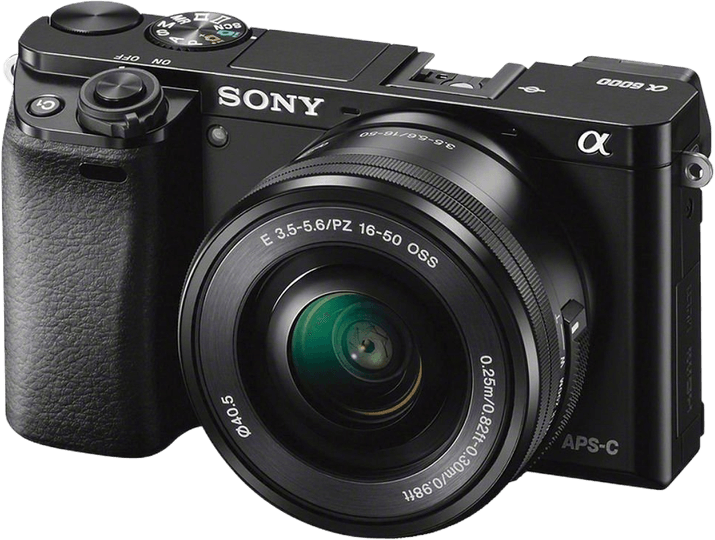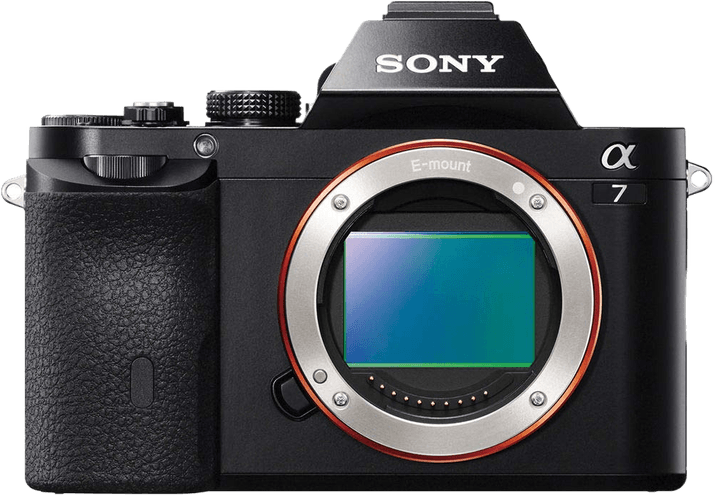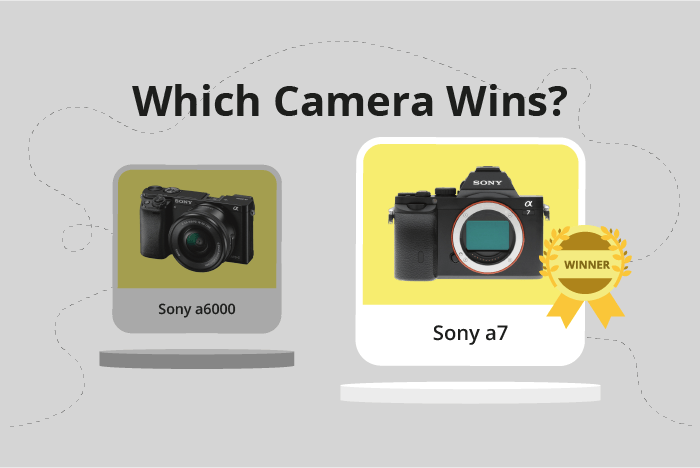Sony a6000 vs a7 Comparison
Sony a6000

Sony a7

The Sony a7 emerges as the winner with a score of 63/100, while the Sony a6000 follows closely with a score of 57/100. Both cameras are mirrorless and were launched in 2013 and 2014, respectively. They share similarities in size, with the a6000 measuring 120 x 67 x 45mm and the a7 at 127 x 94 x 48mm.
The Sony a7 outperforms the a6000 with its higher score, indicating it is a better camera. However, the a6000 has its advantages, such as a lower launch price of $799 compared to the a7’s $1700 and a lighter weight of 344g, making it more portable than the a7’s 474g.
Taking everything into account, the Sony a7 is the superior camera due to its higher score, but the Sony a6000 offers affordability and portability for those who prioritize these factors.
Sony a6000 vs a7 Overview and Optics
The Sony a7 outperforms the Sony a6000 in optics, with a score of 70/100 compared to the a6000’s 67/100. Both cameras share several specifications, including a CMOS sensor, Bionz X processor, Sony E lens mount, and lack of image stabilisation.
The Sony a7 excels with its full-frame sensor size, providing superior image quality and better low-light performance. Its DXOMARK sensor score is also higher at 90, compared to the a6000’s 82, indicating the a7’s enhanced ability to capture detail and dynamic range. Although the a7 has slightly fewer megapixels (24) than the a6000 (24.3), the difference is negligible and does not affect overall image quality.
On the other hand, the Sony a6000 offers a faster shooting speed of 11 frames per second, compared to the a7’s 5 frames per second. This makes the a6000 more suitable for capturing fast-moving subjects, such as sports or wildlife photography. However, this advantage does not outweigh the benefits of the a7’s superior sensor and image quality.
Considering these factors, the Sony a7 is the better choice for photographers seeking top-notch image quality and low-light performance, while the Sony a6000 may be more appealing to those prioritising speed. Despite the a6000’s higher shooting speed, the a7’s overall optical performance makes it the winner in this comparison.
Sony a6000 vs a7 Video Performance
The Sony a6000 and Sony a7 both score 56/100 in video capabilities, making them equal in this aspect. They share common video specifications, such as Full HD maximum video resolution, 1920 x 1080 maximum video dimensions, and 60fps maximum video frame rate. Additionally, neither camera has built-in time-lapse functionality.
Considering their equal scores and shared specifications, it is challenging to determine which camera is better in terms of video performance. However, it is essential to examine each camera’s unique features to understand their strengths and weaknesses.
The Sony a6000, despite having the same video score as the a7, may have some advantages for certain users. For instance, the a6000 is known for its compact size and lightweight design, making it an excellent choice for videographers who require a portable and easy-to-carry camera. Moreover, the a6000 is generally more affordable, making it a suitable option for those on a tighter budget.
On the other hand, the Sony a7, while sharing the same video score and specifications with the a6000, stands out with its full-frame sensor. This feature allows for better low-light performance and a shallower depth of field, which can enhance the overall quality of video footage. Furthermore, the a7 is compatible with a broader range of lenses, providing more options for videographers to achieve their desired shots.
Given the equal video scores and shared specifications, the choice between the Sony a6000 and Sony a7 depends on individual preferences and priorities. The a6000 is ideal for those seeking a compact and budget-friendly option, while the a7 caters to those who value full-frame sensor capabilities and a wider lens compatibility.
Sony a6000 vs a7 Features and Benefits
The Sony a7 emerges as the winner in the feature comparison with a score of 57/100, while the Sony a6000 trails behind at 41/100. Both cameras share several features, including a 3-inch screen size, the absence of a touchscreen, the presence of a flip screen, and a lack of GPS. Additionally, both cameras possess Wi-Fi capabilities but do not have Bluetooth.
The Sony a7 outperforms the a6000 in screen resolution, boasting 1,230,000 dots compared to the a6000’s 921,600 dots. This significant difference in resolution results in a sharper and clearer display on the a7, providing a better user experience when reviewing images and navigating menus.
On the other hand, the Sony a6000 does not have any distinct advantages over the a7 in terms of features. Both cameras share their strengths and weaknesses, with the a7 simply offering a better screen resolution.
Taking these factors into account, the Sony a7 is the superior choice for those who prioritize features, particularly in the area of screen resolution. The a7’s higher-resolution screen will provide a more enjoyable and efficient experience for photographers who frequently review their images or navigate the camera’s settings. Meanwhile, the Sony a6000 does not present any unique advantages in this comparison, making it a less appealing option for those focused on camera features.
Sony a6000 vs a7 Storage and Battery
The Sony a6000 and Sony a7 both have a storage and battery score of 21/100. They share identical specifications in terms of memory card slots, memory cards accepted, and battery type. Both cameras have one memory card slot and accept SD/SDHC/SDXC and Memory Stick Pro Duo/Pro-HG Duo cards. Their batteries are NP-FW50 type.
The Sony a6000 has a slight advantage in battery life, offering 360 shots compared to the Sony a7’s 340 shots. This means the a6000 allows for slightly longer shooting sessions before needing a battery replacement or recharge. However, neither camera offers USB charging capabilities, which could be a drawback for some users.
In terms of storage and battery, the Sony a6000 and Sony a7 are quite similar, with the a6000 having a marginally better battery life. Both cameras could benefit from USB charging functionality.
Alternatives to the Sony a6000 and a7
Are you still undecided about which camera is right for you? Have a look at these popular comparisons that feature the Sony a6000 or the Sony a7:

